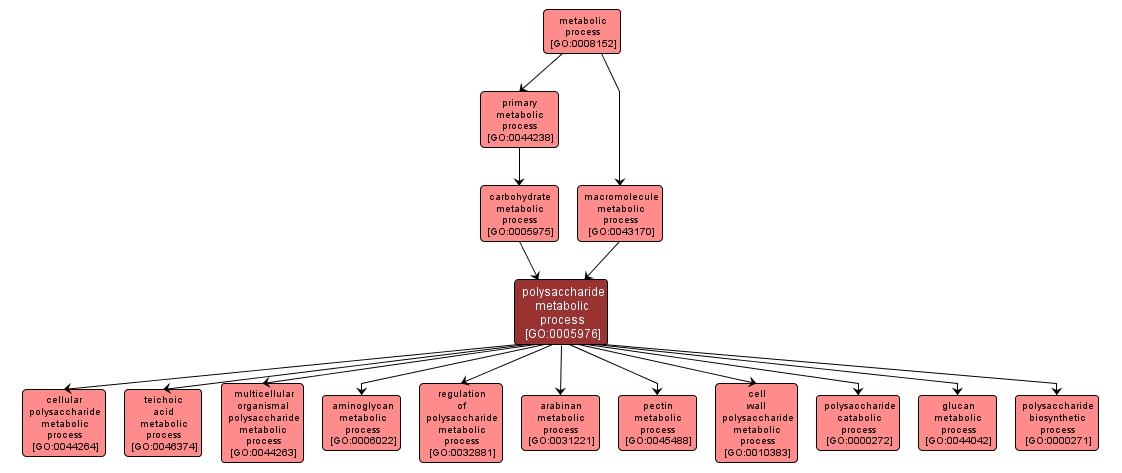GO TERM SUMMARY
|
| Name: |
polysaccharide metabolic process |
| Acc: |
GO:0005976 |
| Aspect: |
Biological Process |
| Desc: |
The chemical reactions and pathways involving polysaccharides, a polymer of more than 20 monosaccharide residues joined by glycosidic linkages. |
Synonyms:
- polysaccharide metabolism
- glycan metabolic process
- glycan metabolism
|
|

|
INTERACTIVE GO GRAPH
|














